Becoming an SDA Provider: A Complete Guide for Success 2025
Thinking of stepping into the rewarding world of Specialist Disability Accommodation (SDA)? This guide is your essential companion, detailing exactly how to become an SDA provider under the National Disability Insurance Scheme (NDIS). Packed with clear, actionable insights, it covers eligibility, the registration process, design standards, dwelling enrolment, ongoing compliance, common pitfalls, and practical business considerations. Providing accurate details during the registration process is crucial for transparency and accountability, and everything you need to understand this challenging but rewarding sector is right here. No fluff, just clear, practical advice you can rely on.
Understanding Specialist Disability Accommodation (SDA)
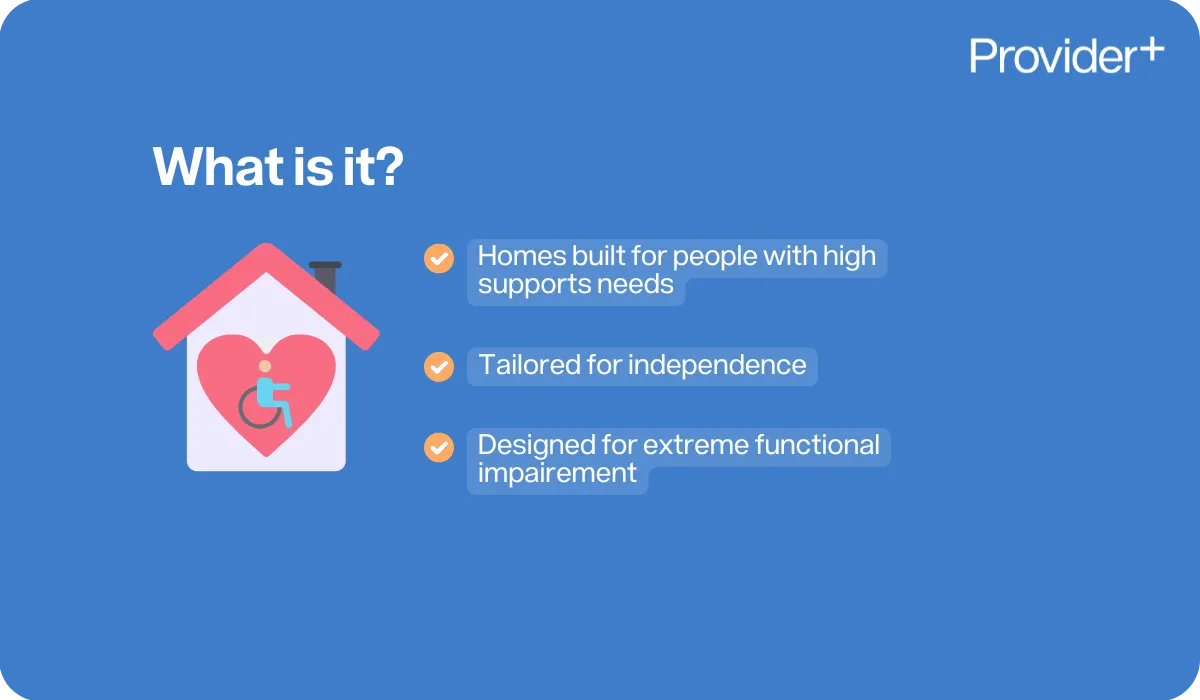
Specialist Disability Accommodation (SDA) refers specifically to housing designed for people with severe disabilities, impairment or very high support needs. It is intended for people with extreme functional impairment who require significant assistance. It is a crucial part of the NDIS, ensuring participants can live independently in a home tailored precisely to their very high support needs.
Becoming an SDA provider means you’re responsible not just for bricks and mortar, but for empowering independence, promoting dignity, and enhancing quality of life. But before you dive in, it’s important to grasp exactly what’s involved.
Who Can Become an SDA Provider?
The good news is, the NDIS Commission does not explicitly identify certain professions for SDA registration. But, as an applicant you must demonstrate that you are suitable. Sole traders, property developers, disability support businesses, and community housing organisations are all eligible to become SDA providers. The key? Demonstrating you are suitable and can meet NDIS Quality and Safeguards Commission standards.
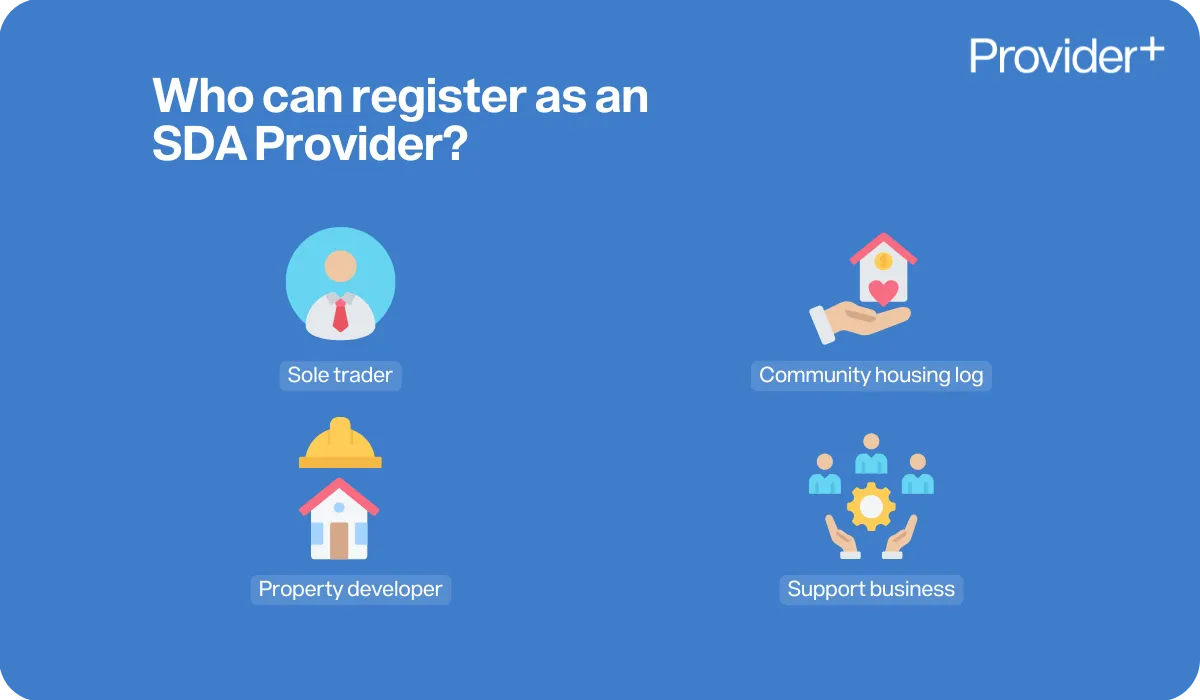
You will need to demonstrate suitability, have worker screening checks in place, have strong governance structures, and adequate financial backing. Whether you’re a small-scale landlord or a large developer, as long as you’re committed to quality and compliance, then SDA may be an option for you. Becoming an SDA provider is not just a business venture but a profound commitment to improving the lives of individuals with disabilities.
SDA Provider Responsibilities: More than Just Housing
As an SDA provider, you’re essentially a landlord—but with a big twist. You must:

- Uphold residents’ rights and ensure their choice of supports.
- Keep properties meticulously maintained to meet stringent SDA design standards.
- Manage tenancy agreements sensitively, with clear, accessible communications.
- Collaborate proactively with Supported Independent Living (SIL) providers and other providers operating within the dwelling.
- Respond swiftly to incidents and complaints, with robust systems in place.
- Ensure robust conflict of interest processes are in place.
The SDA Registration Process, Step-by-Step
Here’s how you actually become registered:
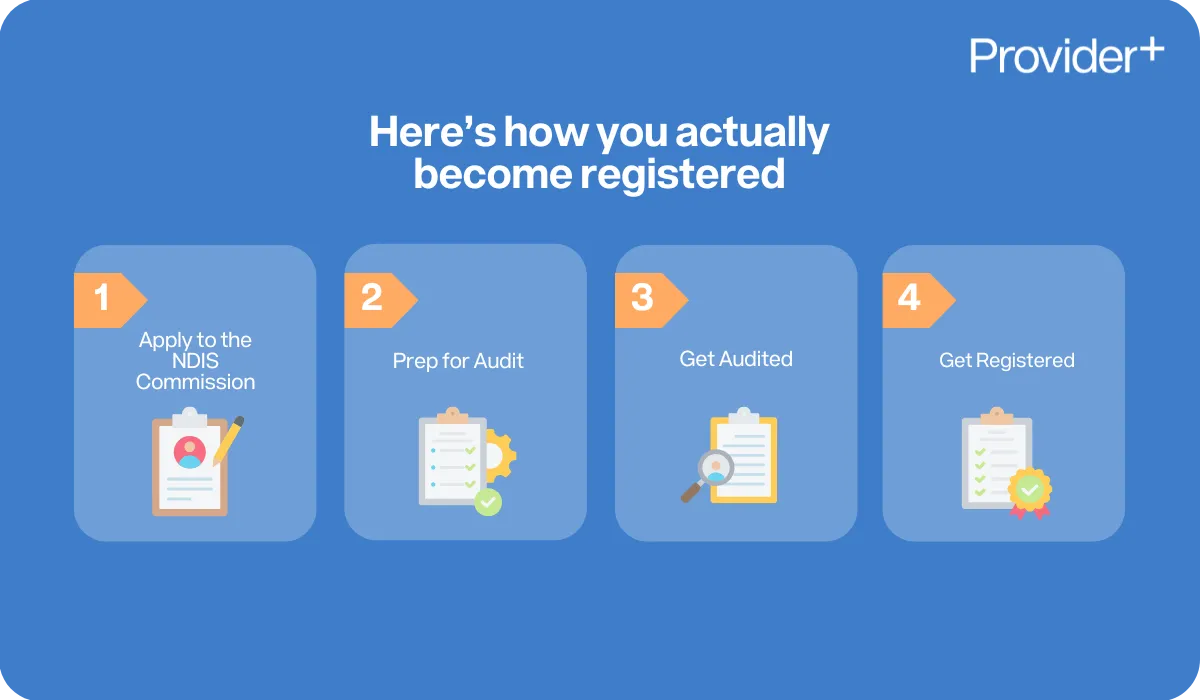
Step 1: Complete an application for Registration with the NDIS Commission, specifying the SDA category. Demonstrate your suitability and complete the self-assessment response questions to demonstrate your knowledge and understanding of the NDIS Practice Standards.
Step 2: Audit preparation: prepare comprehensive policies and documents and ensure all worker screening clearances are valid.
Step 3: Undergo an audit by an NDIS-approved auditor. They’ll verify your capacity to deliver SDA housing that meets the NDIS Practice Standards. Your auditor will then submit their audit recommendation to the NDIS Commission.
Step 4: The NDIS Commission will then assess your suitability based on your application and auditor recommendations. Once approved, you’re officially registered and can begin enrolling your properties. Ensure all information and personnel meet the relevant standards and clearances to maintain compliance.
SDA Design and Construction Requirements
Properties must comply with NDIS SDA Design Standard v1.1. This includes categories:

- Improved Liveability: Enhanced features for sensory and cognitive impairments.
- Fully Accessible: Comprehensive wheelchair access.
- High Physical Support: Advanced assistive technology and structural supports.
- Robust: Durable designs for tenants with complex behaviours.
To qualify as a 'house' under the SDA Rules, the property must not have shared walls, driveways, or other communal aspects with ancillary dwellings, ensuring it is a primary residence distinct from subordinate structures on the same land.
Get your property certified by an accredited SDA assessor before enrolment to ensure it ticks every box.
Enrolling SDA Dwellings with NDIA
Each SDA dwelling must be enrolled via the NDIA’s myplace Provider Portal. Each application for enrolment will need to include supporting documentation, which may include:
- Proof of ownership or legal authority.
- Certificate of occupancy.
- SDA assessor certification confirming compliance.
Successful enrolment means your dwelling is officially recognised, and you can start onboarding SDA participants.
For assistance or inquiries regarding the enrolment process, please contact the NDIA.
Ongoing Compliance & Quality Obligations
Once registered, ongoing compliance is vital. Regular audits, meticulous property maintenance, responsive tenancy management, and staying updated with NDIS regulations are non-negotiable. Quality improvement isn’t just recommended—it’s expected.
Additionally, it is crucial to verify the clearance status of any person in risk-assessed roles to ensure compliance with NDIS guidelines.
Common Pitfalls and How to Dodge Them
Avoid these frequent mistakes:
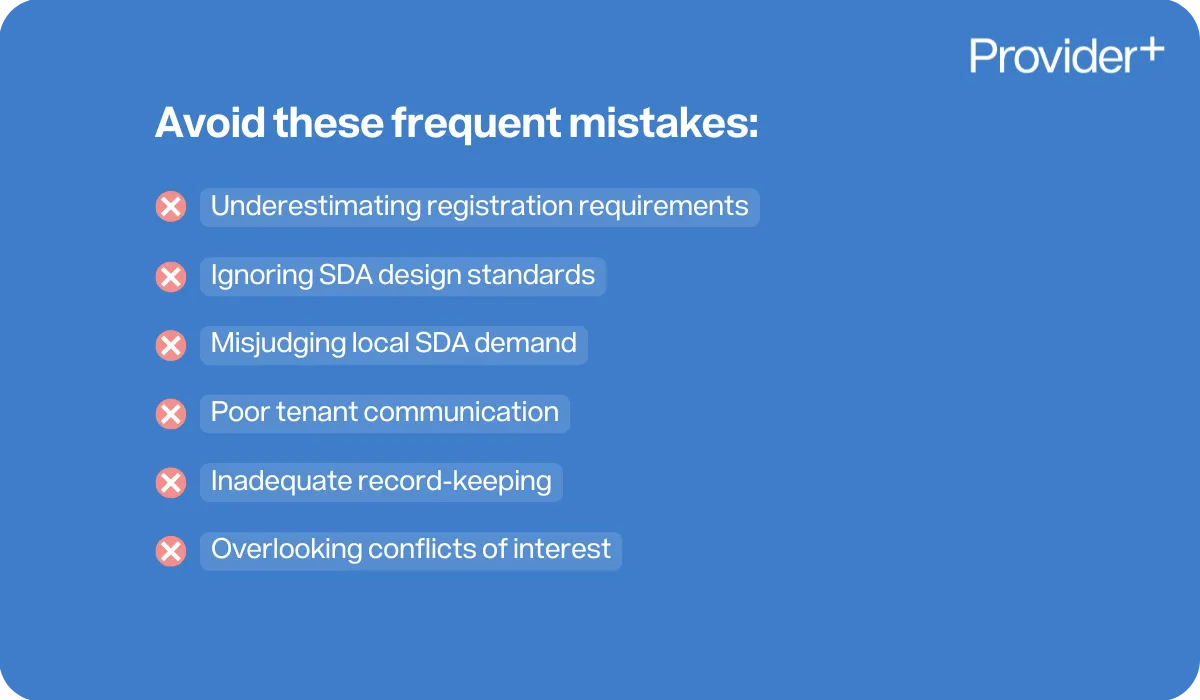
- Underestimating registration requirements.
- Ignoring precise SDA design standards.
- Misjudging local SDA demand.
- Neglecting tenant rights or poorly managing complaints.
- Inadequate record-keeping.
- Not identifying and mitigating conflicts of interest.
For example, a common pitfall is underestimating registration requirements, which can lead to significant delays. To avoid this, ensure you thoroughly understand and comply with all necessary regulations from the outset.
The fix? Detailed planning, professional advice, and continuous self-education.
Business and Financial Considerations
SDA is rewarding, but also financially intensive. Expect significant upfront costs, ongoing maintenance, compliance expenses, and periods of vacancy. SDA providers will receive funding from the NDIA to cover costs associated with delivering SDA services, including property maintenance and vacancy management. ROI typically ranges from 8–12% per annum, provided you carefully select location, design category, and manage properties professionally.
Hotspots currently include regional centres and outer suburban areas, especially for Robust and High Physical Support dwellings. The NDIA has published the "SDA demand data" tool, and it is recommended that all businesses considering moving into SDA use this tool to ensure decision making is risk-based and evidence informed.
Essential Resources and Support
Utilise official resources extensively:
- NDIS Quality and Safeguards Commission page for detailed information on application and registration processes
- NDIA SDA Dwelling Enrolment
- NDIS SDA Pricing Arrangements
- Accredited SDA assessors
- SDA Operational Guideline
- SDA Design Standard
- NDIS (Specialist Disability Accommodation) Rules 2021 (SDA Rules)
Also consider expert help from consultancies like Provider Plus for hands-on guidance through registration and compliance.
For further information on Supported Independent Living (SIL) and its relationship with SDA, refer to the listed resources for additional insights.
FAQs: Your Key SDA Provider Questions Answered
Q: Do I need to register to offer SDA housing?
Yes, SDA is strictly regulated and requires formal NDIS registration. Funding for SDA is specifically allocated within the NDIS plan, and only a small percentage of NDIS participants qualify for this funding, making it a crucial financial component for accessing suitable housing options.
Q: Can sole traders become SDA providers?
Absolutely, provided you meet the required standards and pass an audit.
Q: How do I enrol a dwelling?
Enrol your compliant dwelling via NDIA’s online portal, providing required documentation including assessor certifications.
Q: What’s the typical ROI for SDA providers?
Usually 8–12% per annum, influenced by occupancy rates and property management quality.
Q: Where is SDA housing demand highest?
Strong demand exists in regional centres, outer suburban areas, and specifically for Robust and High Physical Support categories.
Q: What happens if my SDA dwelling doesn’t comply fully?
Non-compliant dwellings cannot be enrolled, leading to significant financial risk. Always engage an accredited SDA assessor early.
With these insights, you’re fully equipped to step confidently into the SDA sector. It’s challenging, sure, but the rewards—both financial and human—are considerable. Welcome to a sector where your work genuinely changes lives.
References:
- NDIS – Specialist Disability Accommodation (SDA) Design Standard: Access the official SDA Design Standard, which outlines the detailed requirements for SDA dwellings. https://www.ndis.gov.au/providers/housing-and-living-supports-and-services/specialist-disability-accommodation/sda-design-standard
- NDIS – SDA Dwelling Enrolment: Guidance on enrolling your SDA dwelling, including necessary documentation and the enrolment process. https://www.ndis.gov.au/providers/housing-and-living-supports-and-services/specialist-disability-accommodation/sda-dwelling-enrolment
- NDIS – Pricing Arrangements for Specialist Disability Accommodation: Detailed information on SDA pricing, including price limits and funding arrangements. https://www.ndis.gov.au/providers/pricing-arrangements
- Provider Plus – NDIS Registration and Compliance Support: Offers support services for NDIS provider registration, compliance, and audit preparation. https://www.providerplus.com.au
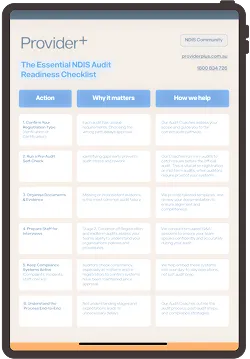
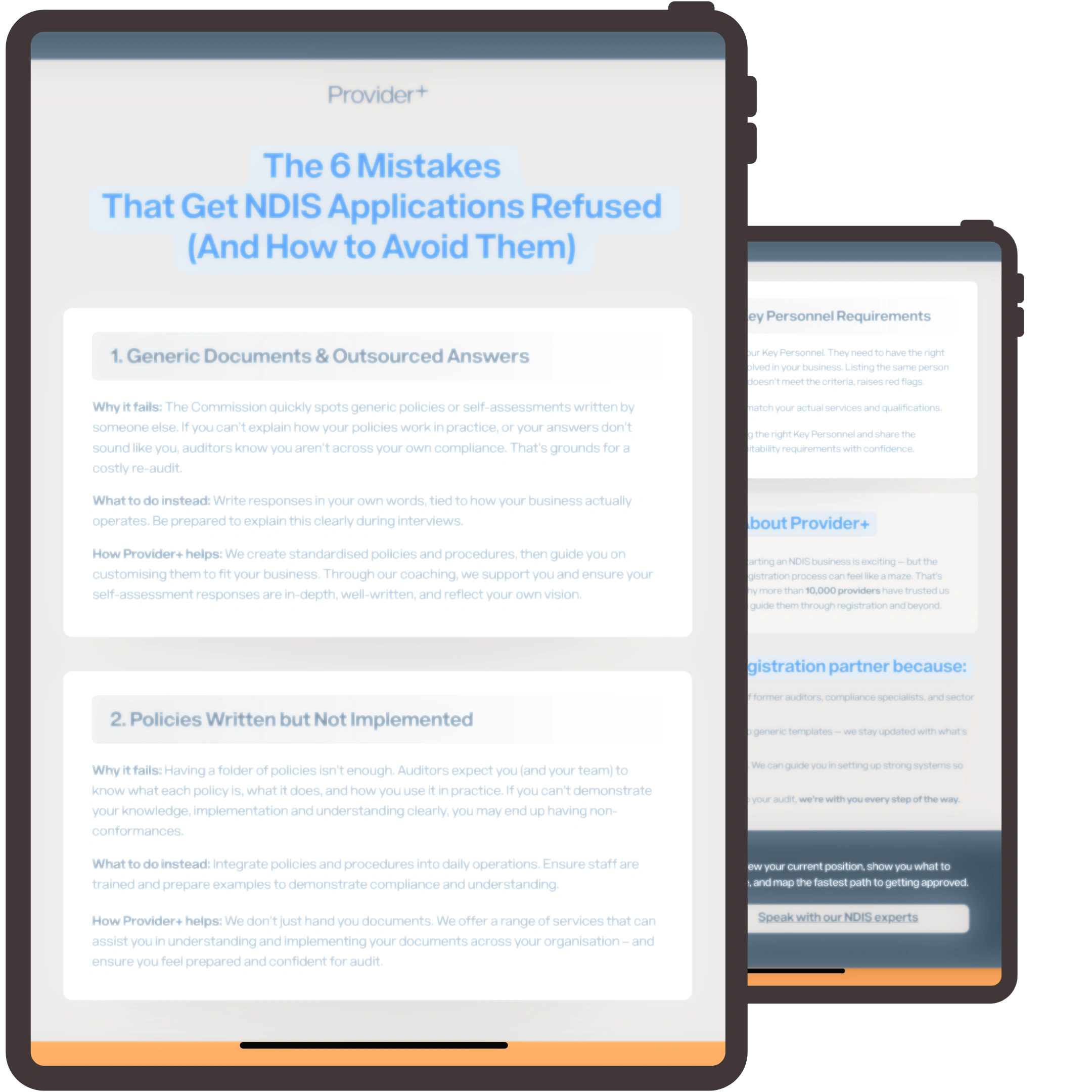
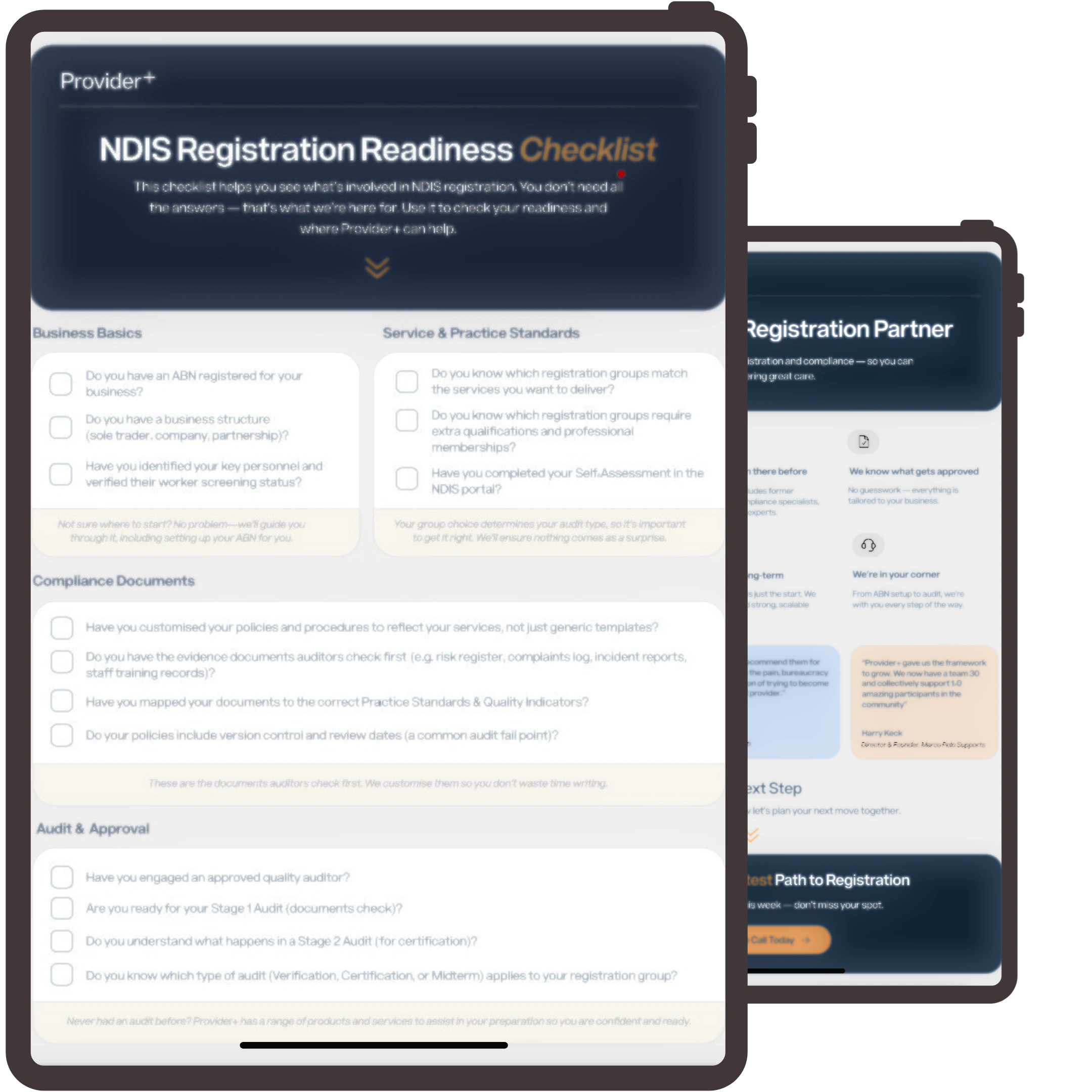

































FAQs
Here is our frequently asked questions.


